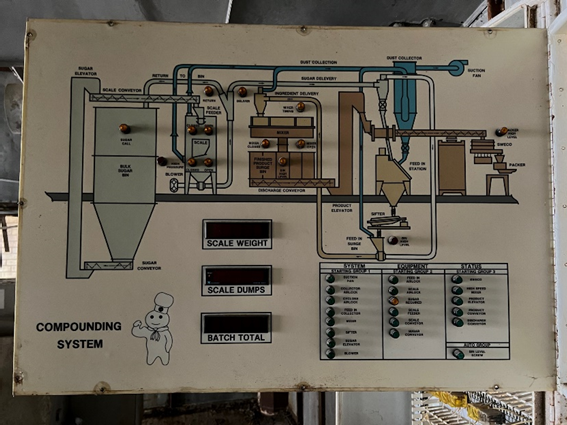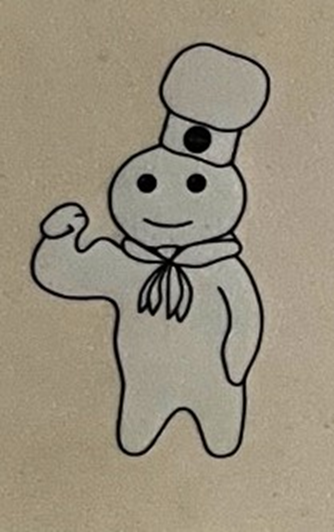Discovery may reshape Pillsbury Doughboy's origin, link it to Springfield's north-end mill

One of the most recognizable and beloved marketing images may have gotten its start in Springfield.
Chris Richmond, the founder and president/treasurer of Moving Pillsbury Forward, thinks he has discovered an early image of the Pillsbury Doughboy at the now-abandoned plant on the city's north end.
The image of the Doughboy flexing its muscle was found on a control panel in the bakery mix building of the 18-acre plant by Richmond in December.
More:Springfield nonprofit hosts tour of Pillsbury Mills plant site
The rendering also shows the image wearing the familiar chef's hat and scarf.
Employees of the Pillsbury plant, a one-time hulking grain and flour factory that shut down in 2001 after going through various owners, have told Richmond that a plant employee made Doughboy sketches in the late 1950s and early 1960s and left them around different buildings.
The building where Richmond found the line drawing dates back to 1949.
That is significant because Pillsbury's official story of how the Poppin' Fresh Doughboy was developed dates to 1965.
An online version credits the Leo Burnett advertising agency in Chicago with coming up with the idea for the brand mascot, known for saying "Hoo! Hoo!" when its stomach is poked.
Richmond said Moving Pillsbury Forward (MPF), a registered not-for-profit corporation that secured the deed to the site nearly a year ago, has tried to reach General Mills about the image, so far to no avail.

A spokesperson from General Mills didn't immediately return a phone call to The State Journal-Register.
General Mills has owned Pillsbury since 2001.
MPF has hired a local patent and trademark attorney to assess the situation and research the mascot, Richmond said.
"I would certainly like to know a little bit more of the history of this (found) image," Richmond said. "Of course, it's historically important if it pre-dates the ad agency's imagery from 1965. If that can be proven, it flies in the face of the Pillsbury company's story.
"We're trying to resolve that conflict through more research."
That Richmond found such an image at the Springfield plant wasn't a surprise to some of its former employees.
"They told me the employee apparently put a sketch in the suggestion box at the Springfield Pillsbury plant and the story from the employees was that guy was paid a little bit of money for the idea," said Richmond, who wouldn't divulge the name of the artist. "Several years later, the ad agency got a contract to come up with something for Pillsbury and out they came with the Doughboy.
"It's a bit of a conflicting story."

Springfield plant employees were known as "Doughboys" even in the 1930s and 1940s, Richmond added. Pillsbury sponsored bowling, baseball, and softball teams touting the "Doughboy" moniker.
The bicep-flexing "Doughboy" is analogous to Rosie the Riveter, the media icon associated with female defense workers during World War II, Richmond pointed out. That sense of imagery would have been at the forefront of people's minds at the times around Springfield, he said.
Richmond said he has secured the panel where the line drawing was found. The abandoned site has long attracted squatters and "urban miners" looking to sell metal for scrap.
MPF recently secured $2 million from the city of Springfield to assist in continued remediation and demolition work on the site. That is in addition to $2 million the federal government promised MPF earlier this year.
Contact Steven Spearie: 217-622-1788, sspearie@sj-r.com, twitter.com/@StevenSpearie.
This article originally appeared on State Journal-Register: Early renderings of the Pillsbury Doughboy may have Springfield roots

